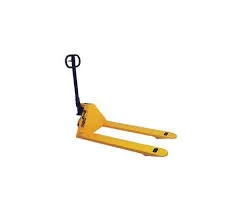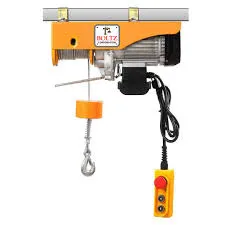Long chain hoists are truly indispensable in industries where lifting heavy loads efficiently and safely is paramount. Whether in construction, manufacturing, or warehousing, these machines provide the backbone for material handling operations. This article delves into the intricacies of long chain hoists, examining their benefits, usage, and the nuances that set them apart in the material handling landscape.

The essence of a long chain hoist lies in its mechanical design, intended for lifting hefty loads vertically. Featuring an extended chain system, these hoists enable easy maneuvering over a wider area, offering versatility in usage across multiple applications. The long chain allows operators to lift, lower, and suspend bulky items with pinpoint accuracy, reducing the physical effort required while increasing safety margins, which is critical in high-risk environments.
A standout feature of long chain hoists is the mechanical advantage they provide. By leveraging gear and pulley ratios, these devices amplify the input force, allowing a single operator to lift incredibly heavy objects with minimum strain. This advantage is a key reason businesses opt for long chain hoists in settings where efficiency and worker safety are prioritized.

Selecting the appropriate long chain hoist is an exercise in understanding the specific needs of an operational environment. Factors such as load capacity,
lift height, and environmental conditions dictate the ideal type of hoist. Long chain hoists come in manual, electric, and pneumatic varieties, each offering distinct benefits suited to different contexts. Manual hoists are cost-effective and ideal for low-weight, infrequent lifts, while electric and pneumatic hoists cater to high-frequency applications with heavier loads. Electric hoists, in particular, offer rapid lifting capabilities and are equipped with safety brakes for enhanced control, making them a popular choice in stringent time-sensitive industrial settings.
long chain hoist
Integral to the successful operation of long chain hoists is rigorous adherence to safety standards. Regular maintenance, inspections, and training are paramount to prevent accidents and equipment failures. Operators must be well-versed in the hoist’s operational manual and comply with Occupational Safety and Health Administration (OSHA) guidelines to ensure the utmost safety. Proper lubrication of the chain and periodic inspection for wear and tear are additional measures that contribute to the longevity and reliability of the hoist.
Investing in a long chain hoist represents not only the purchase of a piece of equipment but the enhancement of an operational process. Businesses benefit not only through expedited workflows but also from the increased morale stemming from a safer work environment. When laced with trust in the durability and performance of their equipment, employees can focus on productivity and precision, knowing they are backed by reliable machinery.
In conclusion, understanding and harnessing the power of long chain hoists is pivotal to optimizing material handling tasks. Their blend of strength, efficiency, and safety make them an invaluable component of industrial operations. By choosing the right hoist and maintaining it diligently, businesses can realize sustained gains in productivity and safety, while demonstrating their expertise and commitment to operational excellence.
As industries continue to modernize, the evolution of long chain hoists will undoubtedly play a significant role, contributing to innovations in lifting technology and material handling solutions. By fostering a culture of safety and efficiency, businesses can position themselves as leaders in their field, leveraging the foundational strength of a well-chosen long chain hoist.








